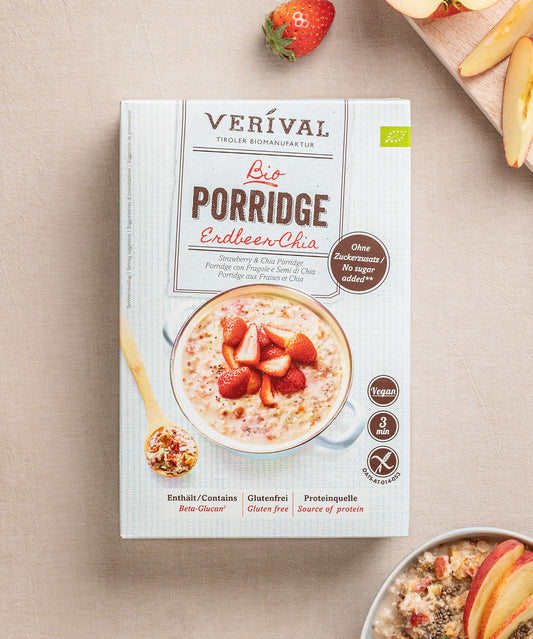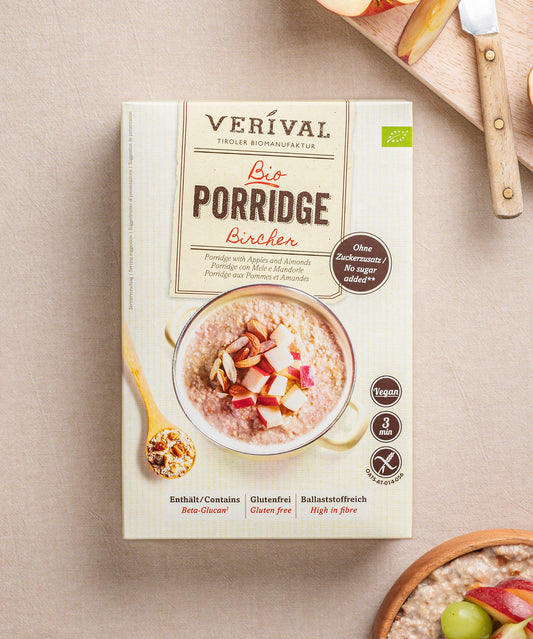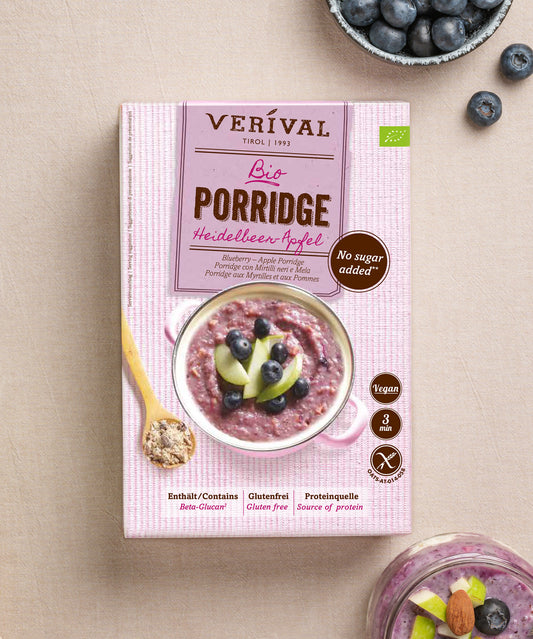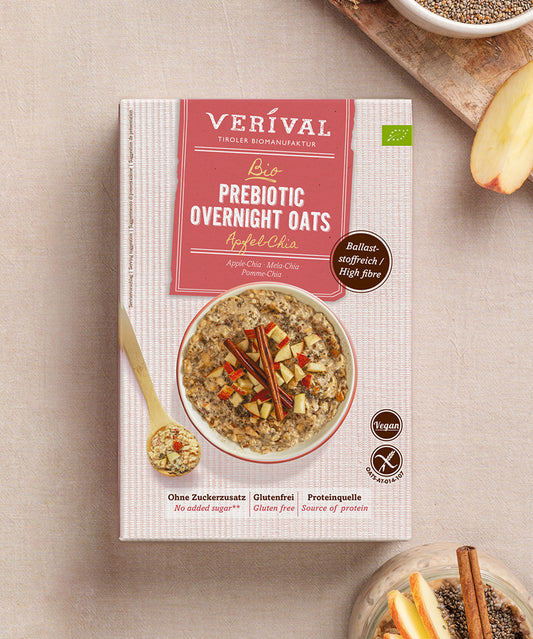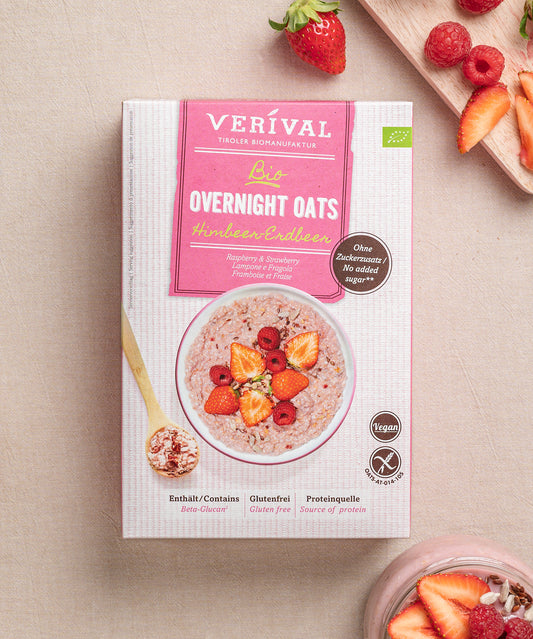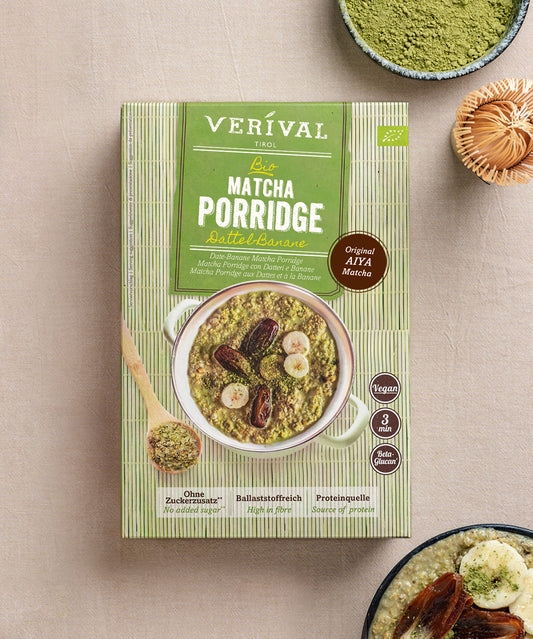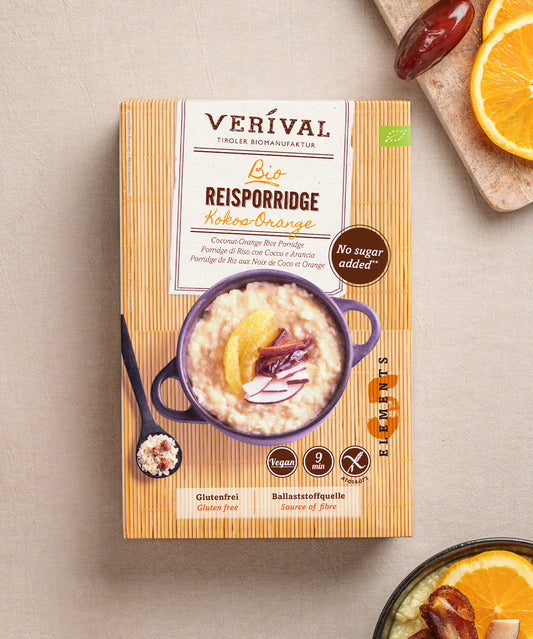Do you eat a healthy diet and pay attention to quality, but still sometimes experience headaches, skin redness or stomach rumbling? Then histamine could be the silent trigger. It is not easy to recognise histamine intolerance, especially in everyday life. But with a few simple changes, you can achieve a lot. We will show you how you can noticeably alleviate your symptoms and feel better again.
Verival muesli without artificial additives – try it now
Why does the body react to histamine?
Histamine is a messenger substance produced by the body that fulfils many important functions. For example, it plays an important role in inflammatory reactions in the nervous system and digestive tract. At the same time, we also consume histamine through food.
In a healthy body, excess histamine is broken down by an enzyme called diamine oxidase (DAO).
However, this breakdown is disrupted in people with histamine intolerance. This is either because there is not enough of the enzyme or because so much histamine is absorbed that the body cannot cope. Unlike a classic allergy, there is no immune reaction, but rather an imbalance in the histamine levels.
This often makes diagnosis and management of the intolerance difficult. The severity of the symptoms depends on many factors, including diet, stress levels, hormonal status and individual tolerance thresholds.
Typical symptoms of histamine intolerance
The symptoms of histamine intolerance are varied and not always easy to recognise. Those affected often report headaches or migraine attacks, gastrointestinal complaints, skin reactions such as redness or itching, dizziness, palpitations or a blocked nose. Some also experience a general feeling of malaise or feel noticeably exhausted after eating.
As these symptoms can have many causes, histamine intolerance is often only recognised at a late stage or not diagnosed at all. This makes it all the more important to pay attention to your body's signals and observe any possible connections.
Which foods you should avoid
Histamine is mainly found in foods that have been matured, stored, fermented or processed. The older or more processed a product is, the more histamine it usually contains. Mature cheeses, sausages, sauerkraut, tomatoes, spinach, alcohol (especially red wine) and fish that is not completely fresh are particularly critical.
In addition, there are so-called histamine liberators. These are foods that contain very little histamine themselves but can promote its release in the body. These include strawberries, citrus fruits, nuts, chocolate and seafood.
The good news is that there are many alternatives, and if you avoid the typical histamine-rich foods, the symptoms can often be significantly reduced.
10 tips for alleviating histamine intolerance
1. Choose fresh foods over ready-made products
The fresher the ingredients, the better. Histamine forms mainly during storage. Therefore, avoid leftovers from the previous day and ready-made products with lots of additives. Instead, cook from scratch using fresh ingredients whenever possible.
2. Keep a food diary
If you regularly struggle with symptoms but the cause is unclear, a food diary can help. Write down what you eat and how you feel afterwards. Over time, you will learn which foods you tolerate well and which you don't.
3. Check the list of ingredients
Many complaints can be avoided by taking a closer look. Problematic additives such as yeast extract, artificial flavours or preservatives are often hidden in industrially manufactured products. Choose products with short, natural ingredient lists.
4. Avoid overripe fruit and spoiled food
Even seemingly healthy options such as bananas or avocados can be problematic, especially if they are overripe. Make sure fruit is fresh and not too soft, and avoid canned foods, dried fruit and expired foods.
5. Choose breakfast basics that you tolerate well
Freshly cooked millet, quinoa or gluten-free oatmeal are well tolerated by many people with histamine intolerance. Combined with mild fruits such as apples or pears and rice milk, they make a nutritious, low-histamine breakfast – perfect for a good start to the day.
6. Focus on DAO-supporting nutrients
Some nutrients such as vitamin C, vitamin B6 and copper support the activity of the DAO enzyme in the body. Foods that are particularly rich in vitamin C and well tolerated, such as peppers (in small quantities) or rosehip tea, can be helpful. However, only use these nutrients in consultation with a specialist. If you have histamine intolerance or other health problems, uncontrolled supplementation can have undesirable effects or disrupt the balance of other nutrients. A qualified professional (e.g. a doctor or nutritionist) can provide individual recommendations tailored to your needs.
7. Make sure you take regular breaks between meals
The body needs time to break down histamine. If you constantly eat small snacks, histamine can accumulate in the body. Regular meal breaks help to stabilise histamine levels.
8. Exercise regularly and reduce stress
Stress can increase histamine release in the body, as can lack of sleep or psychological stress. Gentle exercise, sufficient sleep and small mindfulness rituals in everyday life help to relieve the nervous system.
9. Try new foods slowly and gradually
If you are unsure whether you can tolerate a particular food, try it in small quantities, preferably on its own without many other ingredients. This will allow you to better observe your body's reaction.
10. Seek support from a specialist
Histamine intolerance manifests itself differently in each person. What is well tolerated by one person may cause symptoms in another.
This is precisely why it can be helpful to seek guidance from a nutritionist. They can help you identify individual triggers, create a balanced long-term diet and reduce uncertainty in your everyday life. Sound advice often saves time, stress and unnecessary restrictions.
Discover healthy organic breakfasts from Verival!
Conclusion: alleviate symptoms with small changes
Histamine intolerance can be challenging in everyday life, especially if you don't know exactly what you can and cannot tolerate. But with a little background knowledge, the right choice of foods and a few simple strategies, many symptoms can be significantly reduced.
Look for fresh, natural ingredients and listen to your gut – literally.
Frequently asked questions
What is the quickest remedy for histamine intolerance?
The best thing to do is to avoid known triggers such as mature or highly processed foods and switch to fresh, easily digestible foods. Rest and stress reduction can also alleviate acute symptoms.
What is the quickest way to get histamine out of the body?
Consistently avoid foods containing histamine for a few hours, drink plenty of water and allow your body to rest – this will help it break down the excess histamine.
What should you definitely not eat if you have histamine intolerance?
Avoid highly matured, fermented or reheated foods as well as alcohol, as they contain particularly high levels of histamine or can promote its release.


